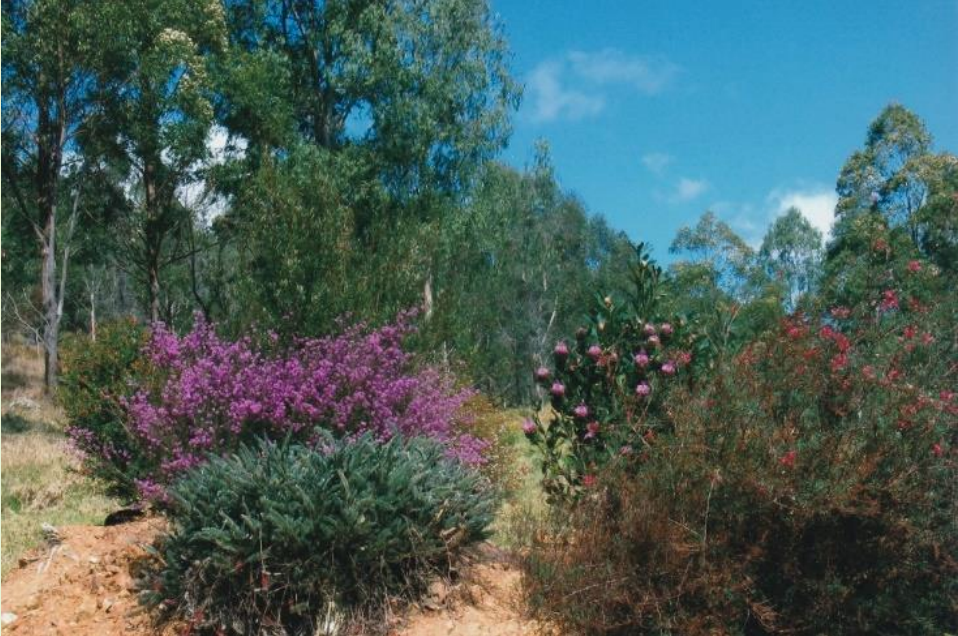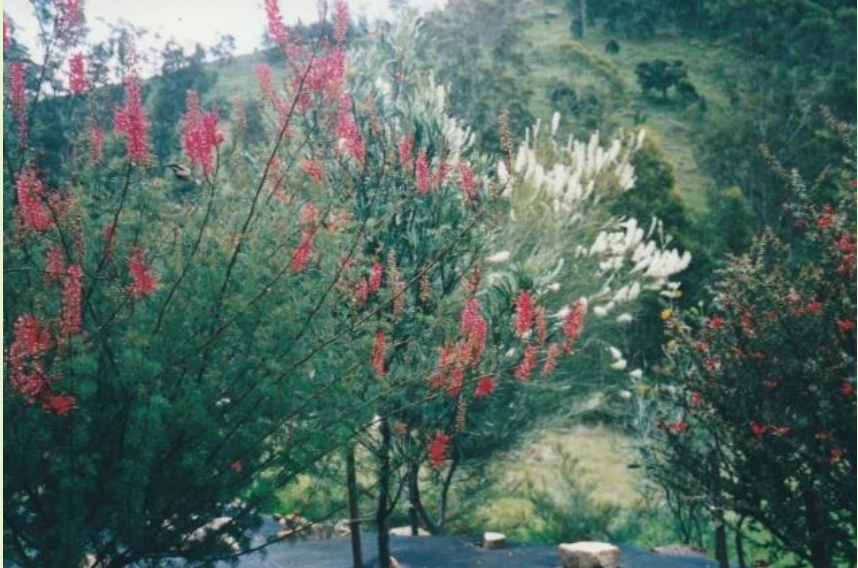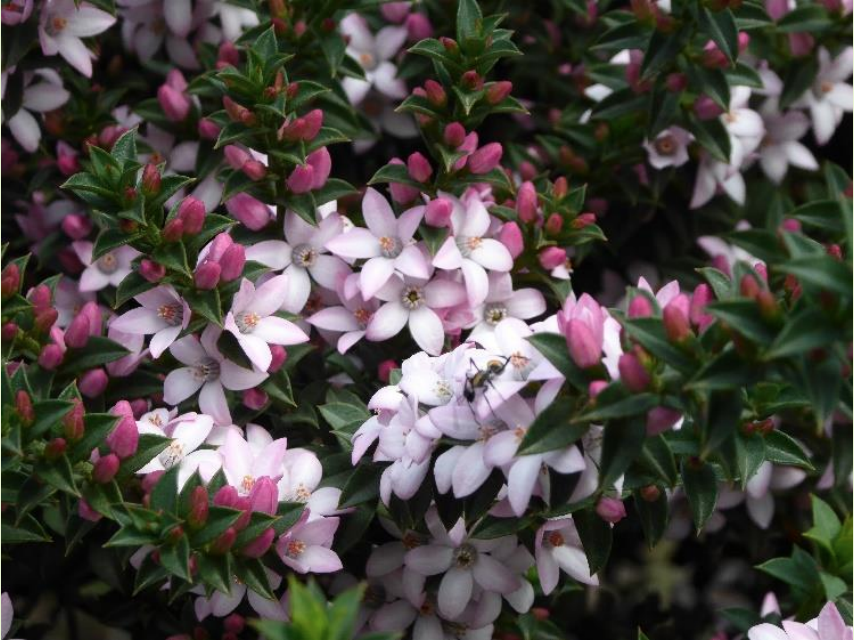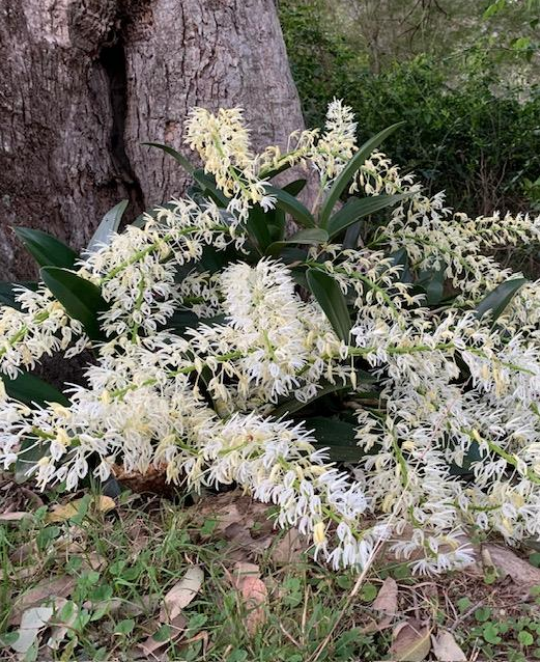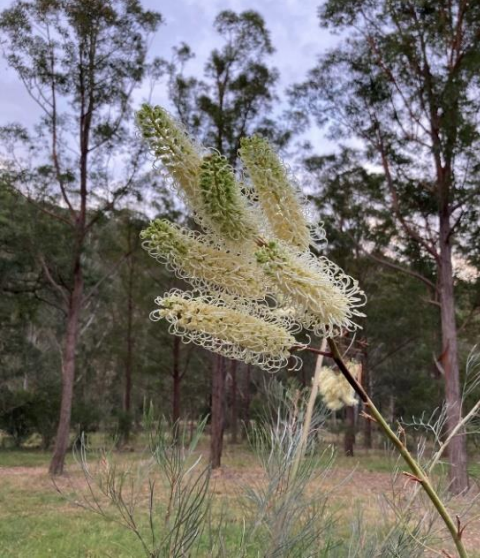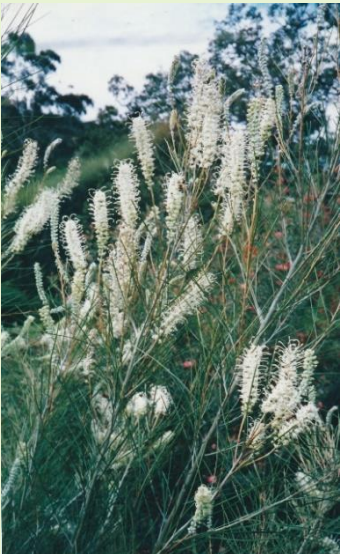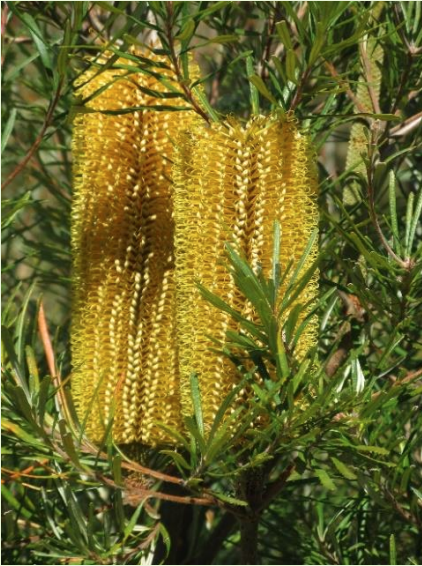This article was first published in the Newsletter of the Parramatta and Hills District Group “CALGAROO A journey into nature April 2025”
In 1989, Tom and I bought a small cattle property of 150 acres (60 hectares) of freehold land in the Gloucester district, with an accompanying lease of 450 acres of the adjacent Copeland State Forest. On asking Forests NSW what we could do with this large lease, it seemed that we could remove the tree orchids and bird’s nest ferns and sell them! Our aim was to establish a timber plantation or reforest some clapped-out cow country. It certainly was not good grazing land—steep-sided, north-facing land adjacent to the Bowman River.
We had a large shed erected with an adjacent water tank, fed from the roof, and a toilet installed in the shed with a septic tank. We bought a reconditioned caravan to stay in. When they flattened the shed site, I was asked where they should put the fill. Despite their doubts, this was made into a long mound a bit below the shed. This became our first garden.
Here in Sydney, we originally bought an uncleared bush block and cleared barely more than needed for the house.

We are surrounded by huge Eucalyptus pilularis and Angophora costata, and the garden has no full sun areas at all. In the Bowman, we had sun from morning till night, so we planted the garden mostly with grevilleas, some of which were grafts. There were other species, including a Buckinghamia celsissima, one of Audrey Taggart’s pink callistemons, and a small row of Melaleuca thymifolia.
Some years later, we instructed a bulldozer driver to make a second mound in the wide area of open land we had left around the shed—I suspect he thought we were mad. Lots more plants, mainly grafted grevilleas, went in there.
Still more years later, a council worker came in to explain that they were widening the road nearby because the school bus had nearly been involved in a head-on collision. They had some “fill,” and he asked if I wanted the nearest gully filled in (this is what you do with “fill” in the country). “Well no, but put it here,” I said, and I proceeded to mark out another large oval with stakes. They backed the trucks in around my markers and tipped. This became the “rock mound,” complete with a great gully in the middle for good drainage. What they tipped was sandy clay with lots of sandstone chunks.
Now, we have three mound gardens, all with full sun. Over the years, some plants have done well, some not. Some have deteriorated with age, and others have grown too large and needed to be removed. But we have been able to grow the grevilleas and many other native plants in the full sun we could never provide in Sydney.
